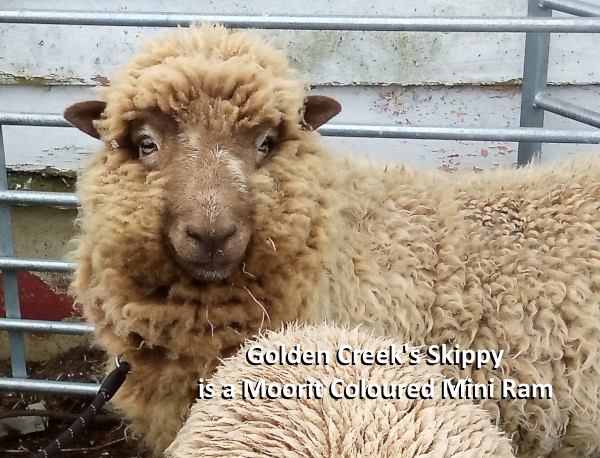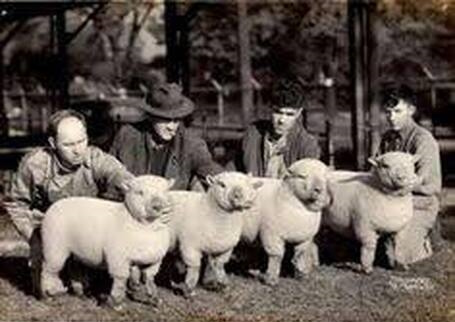The Colour Genetics of Moorit Sheep: An Easy Explanation
Sheep come in a variety of colours, but one particularly fascinating and desirable colour is “moorit.” Moorit sheep have a rich, reddish-brown fleece, which is prized by breeders and fiber artists alike. I like to call them my chocolate sheep!
Understanding the genetics behind this beautiful colour can seem complicated, but it’s quite straightforward once you break it down. Here’s a simple explanation of the colour genetics of moorit sheep.

Basic Sheep Colour Genetics
To understand moorit colour genetics, it’s helpful to start with the basics of sheep colour genetics:
- Genes and Alleles: Genes are segments of DNA that determine various traits, including colour. Each gene can have different forms, called alleles. Sheep inherit one allele for each gene from each parent.
- Dominant and Recessive Alleles: Some alleles are dominant, meaning they will determine the trait even if only one copy is present. Others are recessive, meaning the trait will only show up if the sheep inherits two copies of the recessive allele, one from each parent.
The Agouti Locus and the Brown Gene
The primary genes involved in determining the colour of a sheep’s fleece are located at the Agouti locus and the Brown locus. These loci interact to produce different colours and patterns.
- Agouti Locus: This locus controls the distribution of black and white colours in the fleece. The alleles at the Agouti locus determine whether the sheep will have a solid colour or patterns like spots.
- Brown Locus: This locus is specifically important for moorit sheep. The Brown locus has two main alleles:
- B: The dominant allele, which leads to black pigmentation.
- b: The recessive allele, which results in brown pigmentation when the sheep has two copies (bb).
How Moorit Colour Appears
For a sheep to be moorit, it must have two copies of the recessive brown allele (bb) at the Brown locus. Here’s how it works:
- Genotype bb: A sheep with the genotype bb at the Brown locus will produce brown pigment instead of black. This brown pigment gives the fleece its distinctive moorit colour.
- Agouti Influence: Even though the Agouti locus influences patterns and the distribution of colour, the brown colour from the Brown locus will still be evident. If the sheep has alleles at the Agouti locus that would typically produce a solid colour, the result will be a solid moorit sheep. If the Agouti locus alleles produce a pattern, the sheep will have a pattern in shades of brown instead of black and white.
Simplified Example
Let’s consider two sheep:
- Sheep A: Genotype Bb (one black allele, one brown allele)
- Sheep B: Genotype bb (two brown alleles)
If Sheep A and Sheep B mate, their offspring could have the following combinations at the Brown locus:
- BB: Black (unlikely since neither parent has two dominant black alleles)
- Bb: Black (since the black allele is dominant)
- bb: Moorit (since it has two recessive brown alleles)
Thus, there’s a 50% chance of getting moorit lambs from this pairing.
Conclusion
Moorit sheep have their beautiful brown fleece due to the inheritance of two recessive brown alleles (bb) at the Brown locus. While other genes, like those at the Agouti locus, influence patterns and distribution of colour, the key to the moorit colouration is the presence of these two brown alleles. Understanding these basic genetic principles can help breeders predict and achieve the desired moorit colouration in their flocks.










